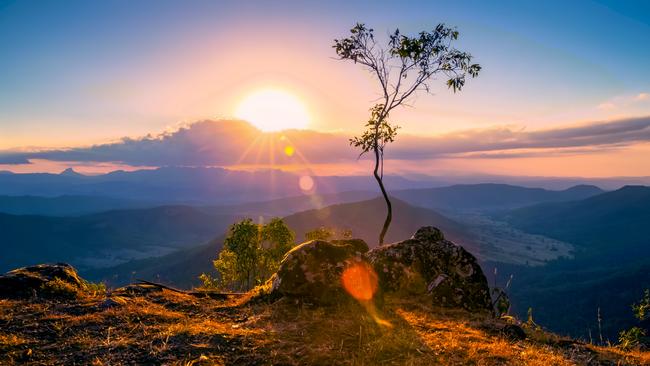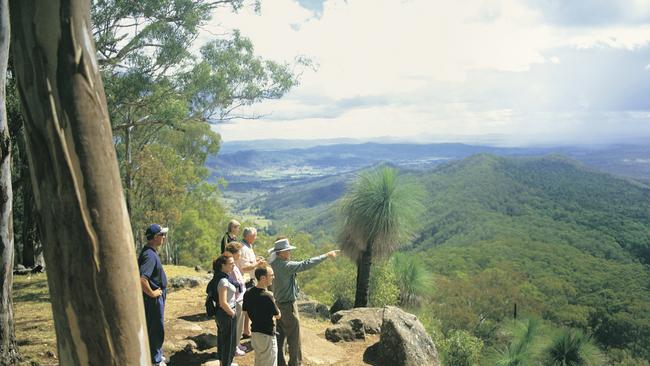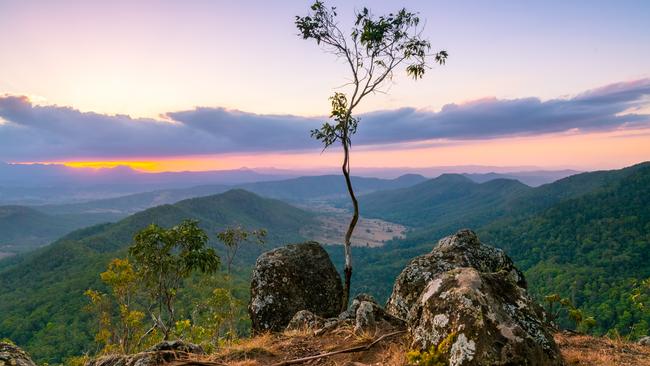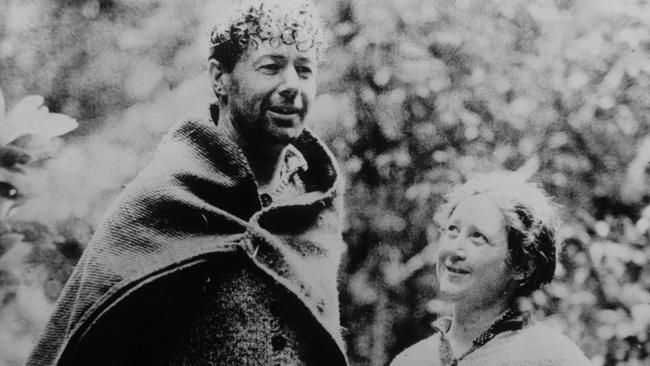Backyard tourist: Ann Wason Moore explores O’Reilly’s in Lamington National Park.
SOCIAL media lovers and wedding planners alike know the photographic potential of this spot in the Gold Coast Hinterland. Here’s why you should check it out.

Travel
Don't miss out on the headlines from Travel. Followed categories will be added to My News.
BLUFF your way to one of the most photogenic spots in the Gold Coast Hinterland.
Pinterest lovers and wedding planners alike well know the photographic potential of Pat’s Bluff and Luke’s Bluff at O’Reilly’s in Lamington National Park.
Perched atop sheer cliffs, wedding photos here give new meaning to the term ‘taking the plunge’. However, the vertical drop does afford a life-changing view over the Albert and Logan River valleys to the Great Dividing Range.

Whether you’re on the lookout for a wedding shoot site or just on the lookout for an amazing lookout, look no further.
Drive along Lamington National Park Road towards O’Reilly’s Rainforest Retreat. There is a very small parking slip on the side of the road between the Python Rock / Moran Falls car park and the Luke O’Reilly’s Farm service road.

If you’re not committed to a dual cliff-side spectacular, take the one-way route to Pat’s Bluff.
If you can’t find the entrance to this walk, which is often overgrown, use the Python Rock track until you reach a junction with a bench and the information sign about Albert Lyrebirds and turn off. Return the way you came.
But if you’re ready to get serious about this walk, commit to the circuit. Walk along the Luke O’Reilly’s Farm service road, being respectful as you pass through private property, until you reach a sheer drop — you’re at Luke’s Bluff.

Take a left and follow the cliff side until you Pat’s Bluff, then it’s just a matter of following the track through the National Park.

EAT AND DRINK:
Even if you’re a city slicker, call the bushman’s bluff and BYO billy tea. Whether your definition of a billy tea is a scone and a takeaway latte from the cafe at O’Reilly’s Rainforest Retreat, a Thermos full of the instant stuff you brought from home or an actual pot you’re going to hang over the fire (probs not a good idea in the bush), this is the perfect setting to sit back and ponder the meaning of life — which is food, obviously.

DISCOVER:
The O’Reilly family pioneered eco-tourism in Australia when they began hosting visitors in Lamington National Park in 1915 and later charging for this service in 1926. In these days, the former O’Reilly’s “Guest House” and slab huts took nature lovers two days via car, train and horseback. While much has changed, you can see some of the first structures the family built on the walk to the Bluffs. Whether it’s Luke O’Reilly’s Farm or Pat’s Log Cabin, bear in mind that these are the first pieces of our eco-tourism history.

WHILE YOU’RE THERE … DO:
Keep an eagle eye out for the local birdlife. In particular, peregrine falcons nest in caves in these cliffs and often rest in the dead trees above the cliff line. The peregrine falcon is a powerful bird of prey, or raptor, that specialises in hunting other birds by diving at them in a high speed dive — called a ‘stoop’. Although widespread throughout the world, they are not a common species. They are native to Australia but are rare across all states and territories.



